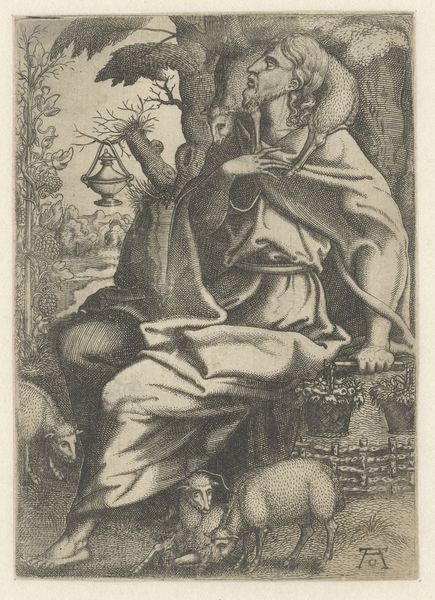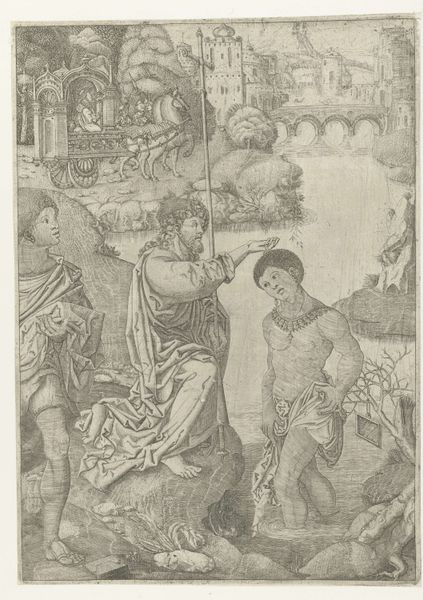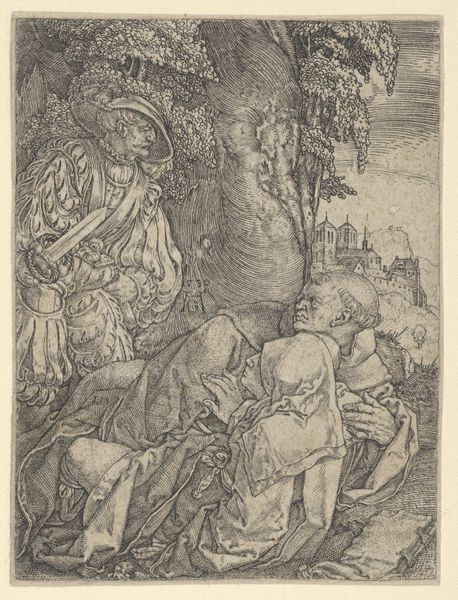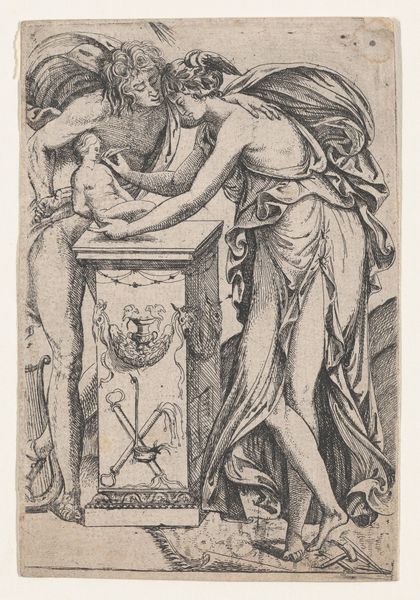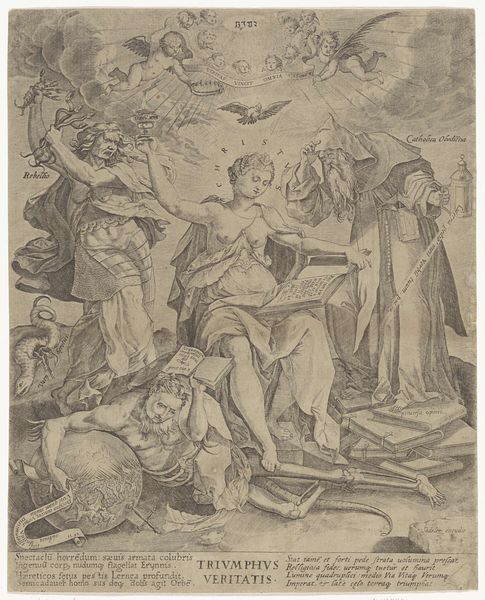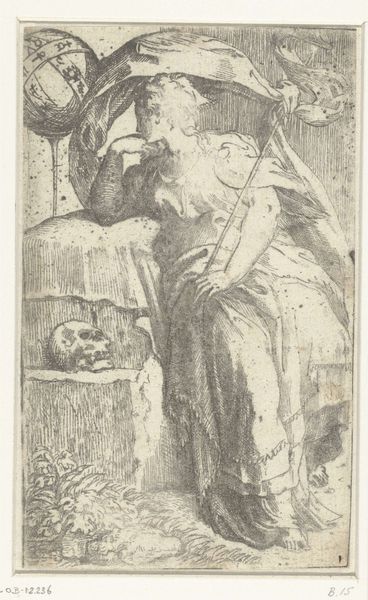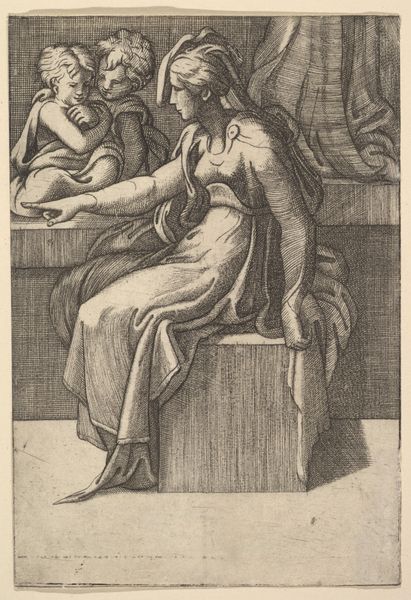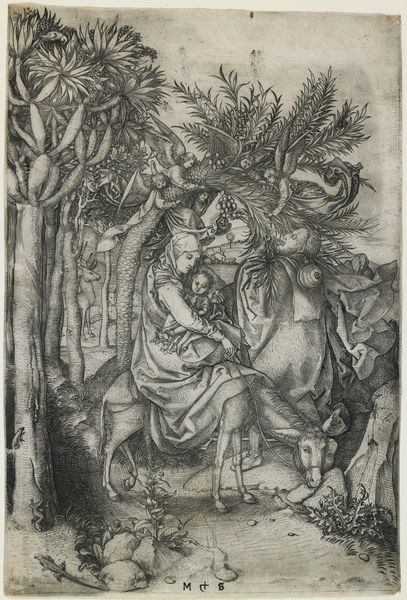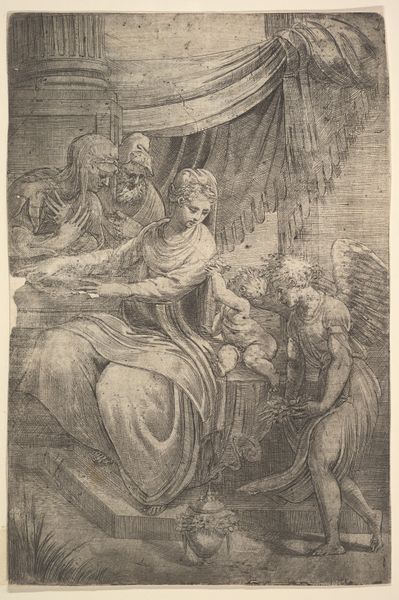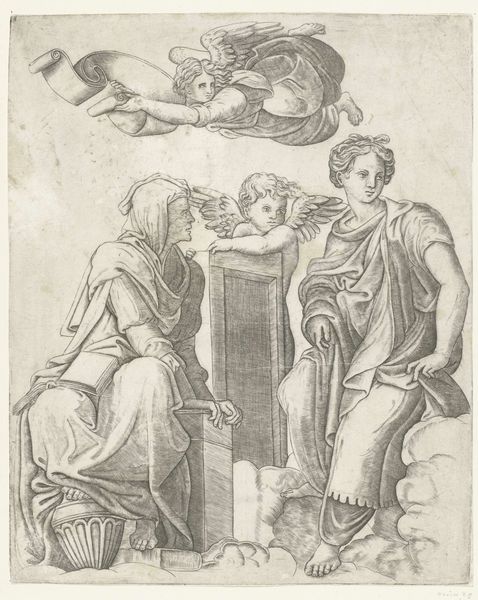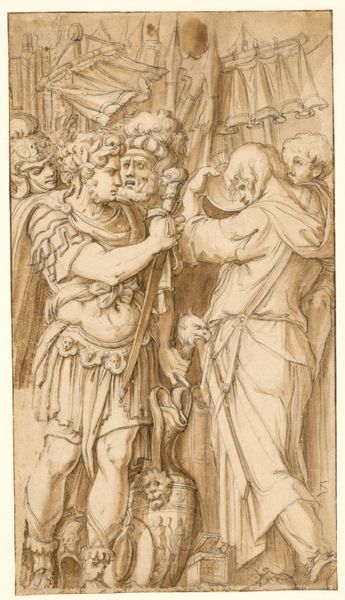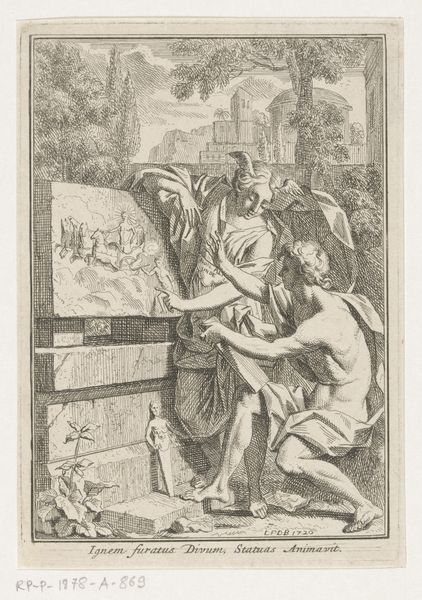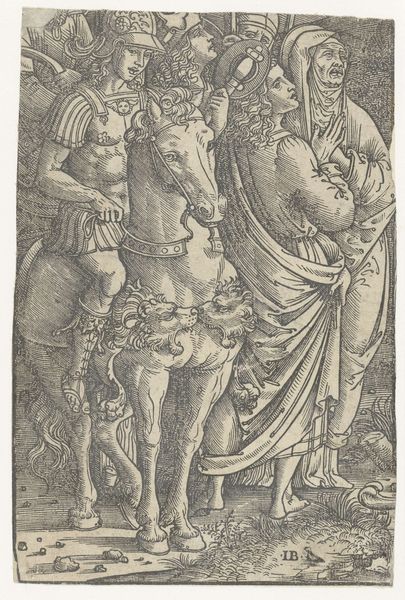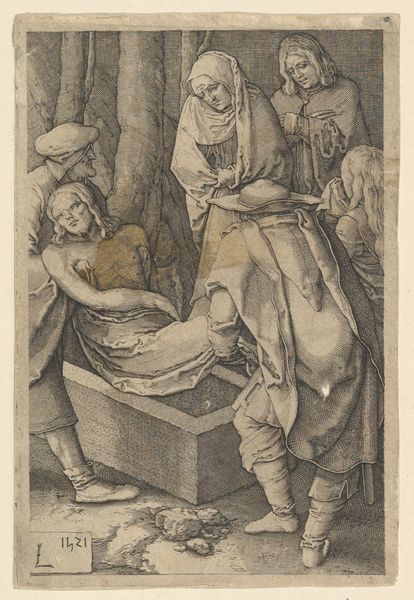
Dimensions: sheet: 17.3 x 9.7 cm (6 13/16 x 3 13/16 in.)
Copyright: National Gallery of Art: CC0 1.0
Curator: Right now we’re standing in front of "I Am Starving," a charcoal drawing created in 1857 by Simeon Solomon. It’s a really striking piece that speaks to some core themes of the era. Editor: It feels Dickensian, doesn't it? That dense crowd fades into what looks like a grimy city street... there's such a heavy atmosphere to it all. I can almost hear the carriages. Curator: Indeed. The composition definitely directs your eye toward that central figure, a young girl who is begging in the street. It encapsulates both individual suffering and a sense of societal indifference to such realities. Editor: Yes! The people behind her... they're just looking past. It gives you that chilling sense of disregard. And is that an owl she is holding? How strange! Curator: Exactly, the people in the back are a stark contrast. Solomon often used symbolism in his art, weaving together images of destitution alongside signs of wealth and privilege, critiquing the prevailing social order. That owl seems to suggest the loneliness of wisdom that comes to you if you go through something. And of course she holds a sign stating her plight. Editor: It’s subtle, and it cuts deep, that contrast you talk about. Even the textures, the smudged quality of the charcoal – it speaks to the grime, the overlooked. Curator: And while Solomon's work frequently addressed biblical and literary subjects, pieces like these are grounded in a kind of gritty social realism, hinting toward movements yet to come. He had deep empathy for outsiders and for suffering people. Editor: It’s remarkable how such a muted palette, just charcoal on paper, can carry such emotional intensity. Curator: It shows a particular strength in visual storytelling, an understanding that the symbols he included weren't simply there but were carefully considered devices meant to trigger our sense of pity. Editor: It is a testament to art’s capacity to mirror uncomfortable truths—to stare straight at society and its shadow selves, unblinking. Thank you, Simeon Solomon, for making the invisible visible! Curator: A perspective that resonates just as powerfully today. Solomon was incredibly adept at distilling social critique and universal suffering into simple yet enduring images. Thank you for joining me.
Comments
No comments
Be the first to comment and join the conversation on the ultimate creative platform.
